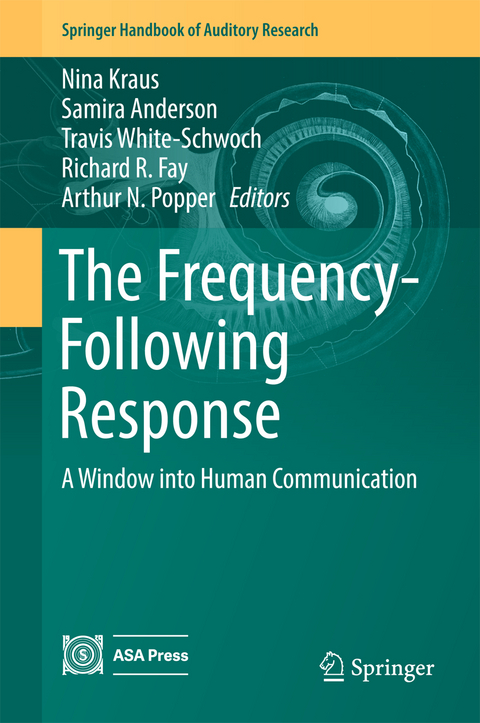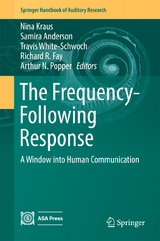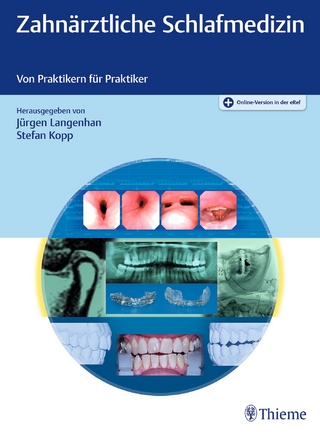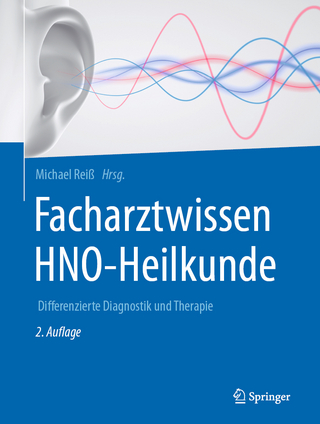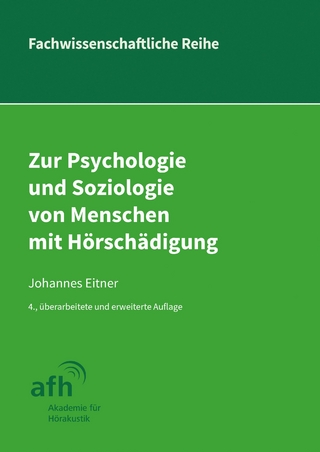The Frequency-Following Response
Springer International Publishing (Verlag)
978-3-319-47942-2 (ISBN)
Nina Kraus has innovated the use of FFR as a measure of human communication skills, life experience, and auditory learning and memory. She is a senior scholar in the field and brings over 30 years’ experience pursuing basic and translational questions in auditory neuroscience. Samira Anderson is a scientist-clinician who brings 25 years’ experience in the clinic and as a young investigator has made major contributions to the understanding of central auditory processing, with a particular emphasis on neuroplasticity and aging/hearing loss. Travis White-Schwoch is a member of the Kraus laboratory with extensive experience in FFR theory and technology, and developmental changes in auditory processing. The editorial team has a strong history of collaboration, and together they bring unique knowledge to the book. Arthur N. Popper is Professor in the Department of Biology and Co-Director of the Center for Comparative and Evolutionary Biology of Hearing at the University of Maryland, College Park. Richard R. Fay is Distinguished Research Professor of Psychology at Loyola University Chicago.
Preface.- The Frequency-Following Response: A Window into Human Communication.- Infant and Childhood Development: Intersections Between Development and Language Experience.- Shaping Brainstem Representation of Pitch - Relevant Information by Language Experience.- Short-Term Learning and Memory: Training and Perceptual Learning.- The Role of the Auditory Brainstem in Regularity Encoding and Deviance Detection Carles Escera.- The Janus Face of Auditory Learning: How Life Experience Shapes Everyday Communication.- Individual Differences in Temporal Perception and Their Implications for Everyday Listening.- Communicating in Challenging Environments: Noise and Reverberation.- Understanding Auditory Processing Disorder Through the FFR.- Neurobiology of Literacy and Reading Disorders.- Clinical Translation: Aging, Hearing Loss, and Amplification.
"This is a very good textbook on the neurophysiology of speech, hearing, understanding, & communication. The book spans clinical development of hearing from childhood, adolescence, adulthood, and aging in human and animals experimental subjects. ... The book will be benefit auditory therapists, audiologists, speech and language therapists, and hearing researchers at all levels." (Joseph J. Grenier, Amazon.com, June, 2018)
“This is a very good textbook on the neurophysiology of speech, hearing, understanding, & communication. The book spans clinical development of hearing from childhood, adolescence, adulthood, and aging in human and animals experimental subjects. … The book will be benefit auditory therapists, audiologists, speech and language therapists, and hearing researchers at all levels.” (Joseph J. Grenier, Amazon.com, June, 2018)
| Erscheinungsdatum | 29.01.2017 |
|---|---|
| Reihe/Serie | Springer Handbook of Auditory Research |
| Zusatzinfo | XVI, 294 p. 66 illus., 32 illus. in color. |
| Verlagsort | Cham |
| Sprache | englisch |
| Maße | 155 x 235 mm |
| Themenwelt | Medizin / Pharmazie ► Medizinische Fachgebiete ► HNO-Heilkunde |
| Naturwissenschaften ► Biologie ► Humanbiologie | |
| Schlagworte | audiology • auditory pathway • Biomedical and Life Sciences • language experience • Medicine: general issues • Neurophysiology • Neurosciences • otorhinolaryngology • Otorhinolaryngology (ENT) • psychoacoustics |
| ISBN-10 | 3-319-47942-3 / 3319479423 |
| ISBN-13 | 978-3-319-47942-2 / 9783319479422 |
| Zustand | Neuware |
| Haben Sie eine Frage zum Produkt? |
aus dem Bereich
